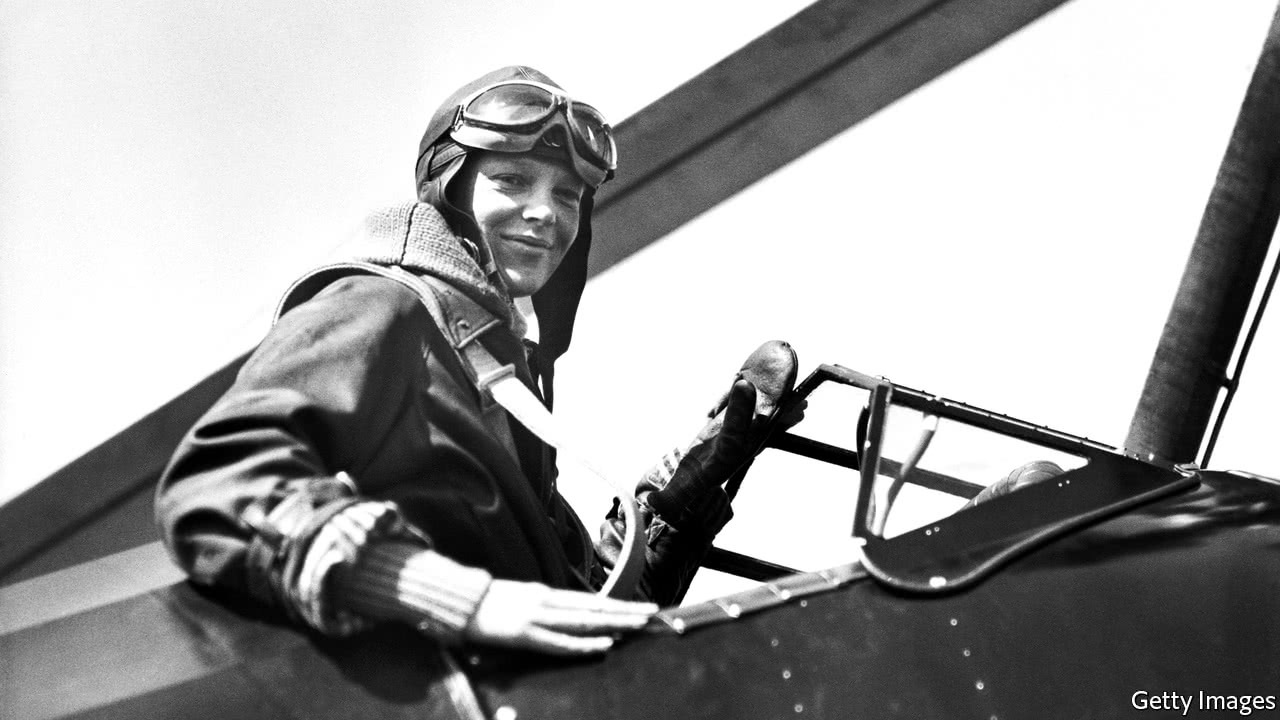A mystery solved?New evidence in the search for Amelia Earhart
Bones found in 1940 may have been those of the lost aviatrix

JULY 2nd of last year marked the 80th anniversary of the disappearance of Amelia Earhart, a pioneering aviatrix (pictured above), and her navigator Fred Noonan over the Pacific Ocean, as they attempted a circumnavigation of the globe in a twin-engined Lockheed Electra monoplane. The many theories about the pair’s demise, aired once more on that occasion, fall into two broad groups: they crashed into the sea and drowned, or they crashed onto Nikumaroro, a remote island, where they perished from hunger. An American forensic anthropologist has new evidence that greatly increases the likelihood of their having suffered the second fate.
Nikumaroro, one of the Phoenix Islands, is an inhospitable place and was uninhabited at the time of the Electra’s disappearance in 1937. Three years later, though, a working party found a human skull and partial skeleton there. Nearby was a part of a shoe they judged to be a woman’s, and a box manufactured in around 1918 that was designed to contain a sextant. The bones were removed to a medical school in Fiji where David Hoodless, a British doctor and anatomy teacher, measured them and concluded that they had belonged to a stocky, middle-aged male.
Latest stories
At some point the bones went missing, so the mystery of the Nikumaroro castaway rests on Hoodless’s measurements and on the state of forensic anthropology in 1941. Without the bones themselves it is hard to assess the reliability of the measurements. But Richard Jantz, a former director of the University of Tennessee’s Forensic Anthropology Centre, points out in an article reviewing the evidence, just published in Forensic Anthropology, how primitive the discipline was at the time.
Hoodless used formulae developed by a 19th-century statistician, Karl Pearson, for calculating stature from bone length, and concluded that the castaway was five feet five-and-a-half inches (1.66 metres) tall. Pearson’s formulae are now, though, widely acknowledged to underestimate height. Hoodless also used three indicators of sex: the ratio of the circumference of the femur to its length; the angle between the femur and the pelvis; and the subpubic angle, between two bones in the pelvis, which is larger in women than in men.
Of those three indicators, only the subpubic angle is still considered valid, and in his notes Hoodless did not divulge the relative weight he gave to each. Even today, says Dr Jantz, an experienced forensic anthropologist making a sex assessment on the basis of this angle alone will not get it right all of the time—and is obliged to express his conclusion in terms of probabilities. Hoodless observed that the bones were “weather-beaten”, damage Dr Jantz thinks was more likely to have been caused by scavenging crabs, and which might also have thrown Hoodless’s measurements off.
If Hoodless was right, the remains could not have been those of the slender Earhart, whose driving and pilot’s licences gave her height as five foot seven and five foot eight respectively. Nor could they have been Noonan’s, since he was a quarter of an inch over six feet tall. But Dr Jantz concludes that in 1941, with the tools at his disposal, right is something Dr Hoodless was unlikely to have been.
Dr Jantz also describes some new research into the matter. Americans of that era differed morphologically from their modern counterparts, so he compared Hoodless’s measurements to those of the skeletons of 2,700 white Americans who died between the 19th and mid-20th centuries. He included measurements of Earhart’s own bones calculated from photographs of her. He concludes that her bones more closely resembled the castaway’s than do 99% of the reference sample.
That finding might be enough to convince those who have until now supported Hoodless’s conclusion. But it is unlikely to silence the conspiracy theorists who continue to circle Earhart’s disappearance. The truth may never be known fully. But even if those who claim she drowned succeed in explaining away the resemblance Dr Jantz has unearthed, another mystery awaits an answer. If the castaway was not Earhart, who was it?